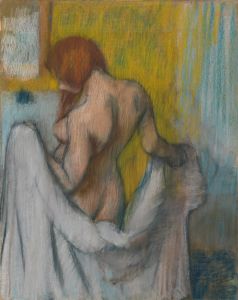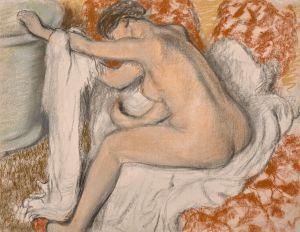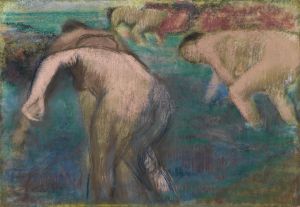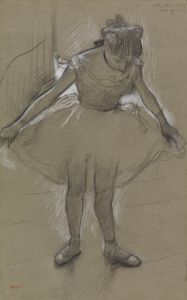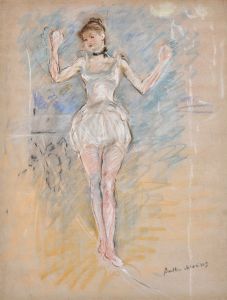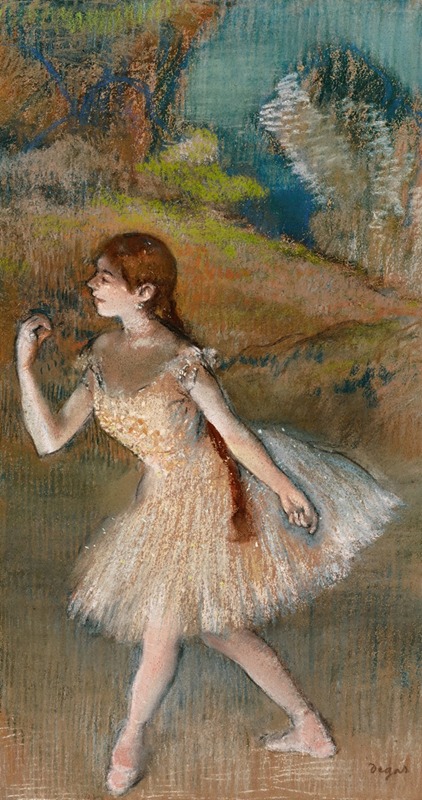
Danseuse
A hand-painted replica of Edgar Degas’s masterpiece Danseuse, meticulously crafted by professional artists to capture the true essence of the original. Each piece is created with museum-quality canvas and rare mineral pigments, carefully painted by experienced artists with delicate brushstrokes and rich, layered colors to perfectly recreate the texture of the original artwork. Unlike machine-printed reproductions, this hand-painted version brings the painting to life, infused with the artist’s emotions and skill in every stroke. Whether for personal collection or home decoration, it instantly elevates the artistic atmosphere of any space.
"Danseuse" (Dancer) is a painting by the renowned French artist Edgar Degas, who is widely celebrated for his depictions of ballet dancers. Degas, born on July 19, 1834, in Paris, France, is considered one of the founders of Impressionism, although he preferred to be associated with Realism. His works often capture the movement and grace of dancers, providing a glimpse into the world of ballet.
"Danseuse" is one of many paintings and pastels created by Degas that focus on ballet dancers. His fascination with the ballet began in the 1860s and continued throughout his career. Degas was known for his meticulous observation of his subjects, often attending rehearsals and performances at the Paris Opéra to study the dancers' movements and poses. This dedication to capturing the essence of ballet is evident in "Danseuse."
The painting depicts a single ballet dancer in a moment of poised elegance. Degas' use of light and shadow, combined with his keen eye for detail, brings the dancer to life. The composition often features the dancer in a graceful pose, highlighting the physicality and discipline required in ballet. Degas' technique involves a blend of loose brushwork and precise lines, creating a sense of movement and fluidity.
Degas' choice of medium varied, and he often experimented with different techniques. "Danseuse" could be an oil painting, pastel, or a combination of both. His pastels, in particular, are known for their vibrant colors and delicate textures, which add depth and dimension to the figures. The background in many of his works is often kept minimal, drawing the viewer's attention to the dancer.
The themes explored in "Danseuse" reflect Degas' interest in the everyday lives of ballet dancers. He was intrigued by the contrast between the glamorous performances and the rigorous, often grueling, practice sessions. This duality is a recurring motif in his work, offering a more nuanced portrayal of the dancers' world.
Degas' influence on the art world is significant. His innovative compositions and techniques have inspired countless artists. His ability to capture the fleeting moments of movement and the subtleties of human expression set him apart from his contemporaries. "Danseuse" is a testament to his skill and dedication as an artist.
The painting is part of a larger body of work that includes other famous pieces such as "The Dance Class," "The Star," and "Dancers in Blue." These works collectively showcase Degas' mastery in depicting ballet dancers and his deep understanding of their art form.
In summary, "Danseuse" by Edgar Degas is a remarkable example of his ability to capture the grace and discipline of ballet dancers. Through his meticulous observation and innovative techniques, Degas has created a lasting legacy that continues to be celebrated in the art world.







